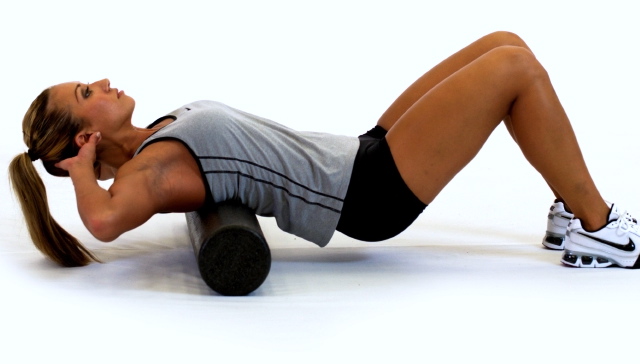If you’re active and participate in any of the fun sports this valley has to offer, you might benefit from daily foam roller stretching to alleviate soreness and promote recovery. Round foam rollers are either 1 or 3 feet long. Popular with savvy athletes, and used in sports medicine clinics for rehab, use of the rollers can help bring blood to tight muscles, help manage chronic problems, and can be used before or after activity. Rolling out your muscles can also warm up cold muscles before deeper stretching. Most gyms have them out for members to use. Similar to massage, in that pressure is applied to a knot, or trigger point, the technique is a form of self-massage called myofascial release. Your body weight resting against the foam roller acts like a steam iron on a wrinkled shirt, smoothing out these knots. As these knots warm up within the muscle and fascia, and unbundle into straighter alignment, you are able to access areas that are difficult to treat with conventional stretches. The technique is to simply stay on the tender spot for 20 to 30 seconds, until the pain starts to subside.
Muscles imbalances, misalignment, and overuse patterns usually create various aches and pains. Many can be addressed with self-myofascial release with the roller. Golgi tendon organs are proprioceptors , deep in tendons. The pressure of rolling on the roller relaxes muscles and other soft tissues so they begin to “let goâ€.
A Common Problem…. and RX
Sore knees are a common complaint among runners. An assessment of the lower leg, for example, might find that the individual excessively rolls their ankle and lower leg inward. A tight iliotibial band ( IT) may be the root of the problem. The iliotibial band attaches the gluteus maximus to the lower leg. In a normal gait, these muscles help control the leg as it moves over the foot. Since the IT band attaches to the lower leg, the excessive inward rotation of the leg can, over time, cause inflammation and pain in the IT band. In this scenario, here’s where the roller comes in:
Place the roller perpendicular to the outside of your thigh and lie over it. Roll over it at a rate of one inch per second, looking for any sore or tender spots. Hold your body weight there for 30- 40 seconds until the pain starts to subside. Try to relax, even if it is uncomfortable. Continue rolling down the side of your hip towards your knee. Roll each leg every day, for about 1-2 minutes. Make sure you don ’t roll over the knee joint.
Check out www.power-systems.com, www.gaiama.com or www.amazon.com to purchase one. Start off this fall stretched and ready to get outside and play!

